Quick Facts
- Parking and Launching: Stearman Beach
- Launching type: pebbly beach
- Difficulty – weather dependent, very difficult on windy days
- Boat traffic – no boats close to shore
- View – fancy houses on the shoreline, nice views across Burrard Inlet towards Vancouver, Stanley Park, Lions Gate Bridge, and Point Atkinson Lighthouse
- Facilities – no washrooms
- Overall score – 6/10
The forecast called for some wind, but the sun was bright and inviting. When my parents wanted to go for a hike in Lighthouse Park, I jumped on the opportunity for a West Vancouver downwind paddle.
Since I enjoyed downwind paddles in Indian Arm and Sechelt Inlet, I felt pretty confident that a 8km downwind paddle from Stearman Beach to Ambleside Park would be easily doable in about 1.5 hours.
I did note that the two Windy apps called for vastly different wind speeds. One called for winds of 12km/h and gusts of 14km/h, which would be not that different than what I’ve encountered before. The other app called for winds of 13km/h with gusts of 31km/h, which would be a different beast. I thought I would take a peek at the waters to decide.


Stearman Beach is a small neighborhood beach with a small parking lot that could fit about half a dozen cars with a 3-hour parking limit. No dogs, no fires, no smoking, and no washroom. A bare minimum public beach access point.


The beach itself is mostly pebbly, so it’s likely not the most popular sunbathing destination.

The waves and winds looked manageable, so I went ahead with the plan of paddling to Ambleside Park and getting picked up by my parents after their hike in Lighthouse Park.

For safety, I was geared up with my 2/3mm wetsuit, some quick-drying pants, a nylon jacket, a pair of knee-length Sealskin water socks, neoprene water boots, and a hat. I had my cellphone in a waterproof case, and wore a waist belt inflatable PFD and a strap for my glasses. In my dry bag I packed a change of clothes.
And I’m glad I was prepared!
Very quickly I learned that this was going to be a different paddle than my previous experiences. The wind and chops were increasing and I only stayed standing for a few minutes before giving up and kneeling down. I haven’t had to kneel paddle due to chops for a long time!

Kneeling and fighting the waves was quite tiring. I alternated between kneeling and sitting to give different groups of muscle a break.

The restrictive wet suit added to the difficulty but it was doing a great job of keeping me warm.
The wind was pushing me towards the shore, which was rocky and dangerous if I’m not careful. As I was trying to steer the paddleboard in between waves, a wave finally knocked me over and flipped my board. While I was kneeling!
I quickly got my bearings and flipped my board back upright. Quick check: glasses safely secured by the leash, dry bag still nicely tied down, hat is floating in front so I just grabbed it. Water temp was 9 degrees but with my wet suit I didn’t feel it being cold at all.
Next task was trying to get back up onto the board but it was exceedingly difficult to do in none stop 2 feet waves. I think I could have done it after a few more tries, but there’s a good chance that I fall back in before regaining full balance. Thankfully I was paddling close to shore so I changed my plan and simply rode the waves to the beach.

I took a few minutes to catch my breath and got oriented. My cellphone was safe and dry in a leashed case. I was close to Dundarave Park and there’s a beach access point about 400m from where I landed.

The wind was so gusty that I had trouble even holding the paddleboard on shore. I deflated it and folded it up, and used my shoulder straps to carry it.

One final challenge was crossing a small creek with my board and gears, but I managed safely using my paddle as a walking stick.

Finally I arrived at the public beach access point and relaxed. The access is located at 28th St, which has a small parking lot with no time limit. I already texted my parents about the change of plans so they arrived to pick me up after some 20 minutes.


I was definitely humbled by this experience. A few things I did right which made this outing boundary-testing instead of downright dangerous:
- Clear paddle plan. My parents knew exactly where I was going and what time to expect me at the destination.
- Paddleboard leash. My board stayed with me as I went overboard, so I could use it as a floatation device.
- Dry bag and leash for cellphone. If I couldn’t use my phone to orient myself and call for backup, it would be a lot harder for me to get picked up.
- Stayed close to shore. I was only a few meters away from the beach for the entire paddle, so it took less than an minute after falling in to be standing on my feet.
- Wet suit. Temperature was never an issue during this ordeal. If I didn’t wear my wet suit, I would still have made it to shore this time since I fell in next to an accessible beach. If I wasn’t so lucky and had to stay in the water for much longer to find a pull out point, it would be a problem had I not been wearing my wet suit.
- Leash for glasses. If I lost my glasses than this would be a bigger rescue mission since I wouldn’t be able to safely walk across the rocky beach.
A few things that happened by good fortune that helped me out but can’t be counted on:
- I fell in right next to a beach so I pull myself to safety right away. There are large sections of West Vancouver shoreline where it’s too rocky to land. If I fell in far away from a pull out point, it could be scary especially experiencing how difficult it was to get back onto the board in big chops.
- I landed very close to a public access point. Every kilometer or so on the West Van shoreline there’s some kind of public access to the beach. If I had to walk much longer to get to a meeting point to get picked up, the chance of getting fatigued and injured on the rocky beach would increase significantly.
A few things I should definitely do before attempting anything like this again:
- Practice re-boarding in rough weather. It was quite humbling to find out that I couldn’t easily get back onto the board with 2feet waves. I need to practice this with other paddlers before heading out in big chops.
- Practice different surfing stance on the board. In retrospect, a staggered surfing stance might have been better.
- Invest in a dry suit. Although my wet suit did its job of keeping me warm, I feel a big part of my difficulty was due to the restrictions. It made me tired more quickly even before falling in, and made me less agile for adjusting balance.
Oh, and if two weather apps call for very different conditions, best to err on the side of caution and believe the harsher conditions would come to pass. The wind gust this day was definitely more than 30km/h, not 15km/h.
Discover more from Outdoor Family
Subscribe to get the latest posts sent to your email.

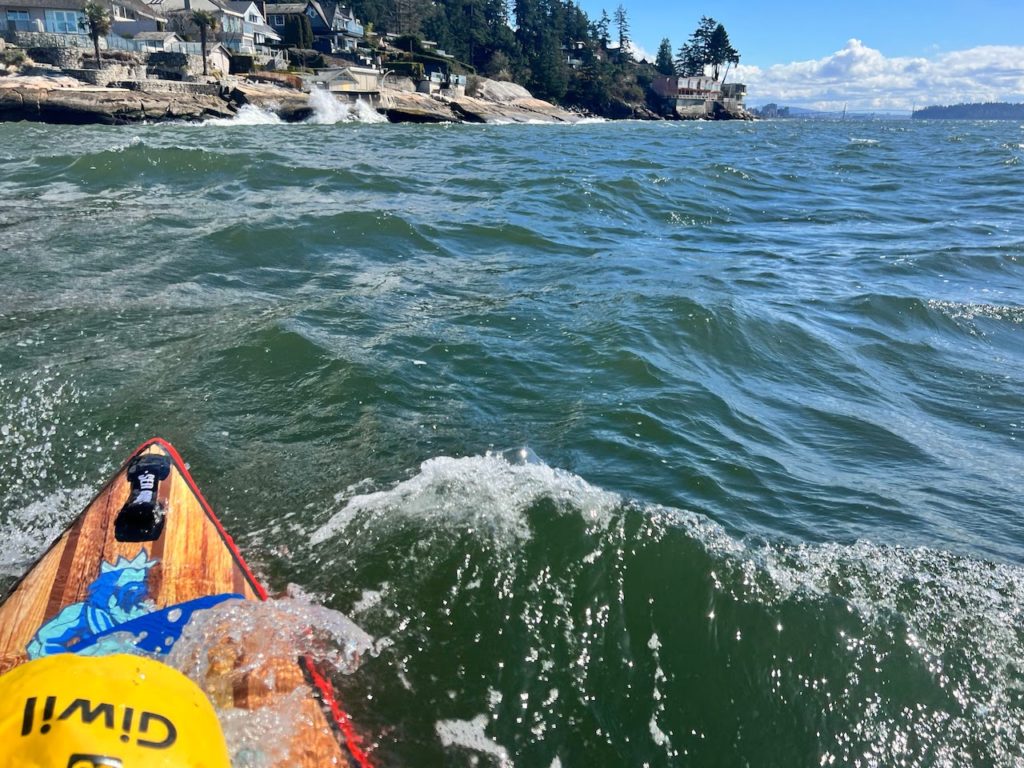
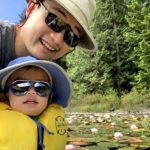
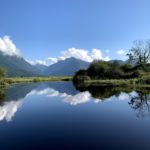
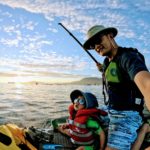
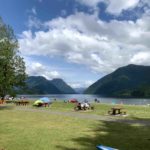
Well played on the safety precautions pre-paddle and being cognizant to ‘call an audible’ when things got hairy. The west wind waves with the changing shoreline and wave rebound can make it gnarly in there!
Definitely learned to respect the ocean even more, and check my ego on that one. Need to pick my battles more carefully next time.
Pingback: Passage Island Paddle Pass – I SUP Explore
Thanks for the shout out! It wasn’t the most ego-boosting to describe my falls but probably most educational. Kudos for sharing your learning!
Pingback: Indian Arm Paddle to Thwaytes Landing Regional Park - Outdoor Family
Pingback: Eagle Harbour Paddle - Outdoor Family